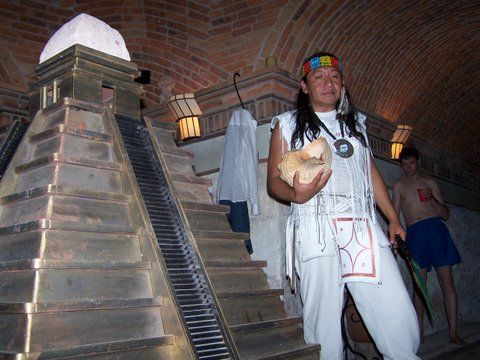

Mandel Legal Aid Clinic of the University of Chicago Law School. A prime example is our partnership over the last 18 years with civil rights attorney Craig Futterman and his students at the Edwin F. From the start, the Invisible Institute created capacity through collaboration. It came to refer not to a formal organization, but a loose network of collaborators and a certain style of inquiry, exploration, and relationship-building. Working out of a vacant, five-bedroom unit in a doomed public housing high-rise with an open-air drug market outside the door, we announced in the first issue of The View that it was published under the auspices of something called the Invisible Institute. The name “Invisible Institute” was first uttered in jest. And with two colleagues - David Eads and Patricia Evans - I published occasional human rights reports on conditions in public housing under the title “ The View From the Ground.” I served as an adviser to the resident council. I created a program of “grassroots public works” aimed at providing alternatives for ex-offenders and members of street gangs. It is also the story of how a style of on-the-ground reporting that Studs Terkel once characterized as “guerrilla journalism” matured into the Invisible Institute, a journalism production company based on the South Side of Chicago that has assumed the function of curating this category of public information on behalf of the public.ĭuring the final chapter of high-rise public housing in Chicago - from 1994 until the final demolition in 2007 - I was a daily presence at Stateway Gardens, a development centrally located in the massive concentration of public housing along a three-mile stretch of South State Street. The decadelong effort to gain access to this information is an important thread in the history of the struggle for civil rights under law in Chicago. The scale of CPDP is without parallel: It includes more than 240,000 allegations of misconduct involving more than 22,000 Chicago police officers over a 50-year period. The data set is complete for the period 2000 to 2016 substantially complete back to 1988, and includes some data going back as far as the late 1960s. This book offers valuable research on a topic that has been ignored until now and makes a cultural contribution to the society whose history has been forgotten.Today the Invisible Institute, in collaboration with The Intercept, releases the Citizens Police Data Project 2.0, a public database containing the disciplinary histories of Chicago police officers. This is not a chronological reconstruction, nor is it a complete reconstruction, but rather a fragmentary collection of the traces of the forgotten city. She describes the public spaces, the political movements, the social and feminist societies, newspapers, clubs, and leisure activities of women. In the absence of well-kept archives from which the necessary information could be gleaned, the author attempts to recreate the social history of women in the city by means of displays, paintings, written and spoken episodes, newspaper clippings, biographies, and interviews with those who lived in the Palestinian cities-including Haifa, Jaffa, and Ramle-before 1948. The term “the invisible” has a double purpose in the book: on the one hand, to present the Palestinian cities that were destroyed in 1948, and on the other, to recreate the urban life of the tens of thousands of women that lived in them. This is not the first work about Palestinian society in the period before the Nakba, but until now the role of the city as the instigator of civilized life has not been emphasized sufficiently, partly because during the Nakba Palestinian society also lost its historical documentation. The Invisible: Women and the Palestinian Cities presents real women in Palestinian cities that existed but are no more. “Your cities,” the ruler responded with open disbelief, “do not exist. The title The Invisible calls to mind the imaginary cities named after women that Marco Polo describes to the Mongolian ruler Kublai Khan in Italo Calvino’s novel.


 0 kommentar(er)
0 kommentar(er)
